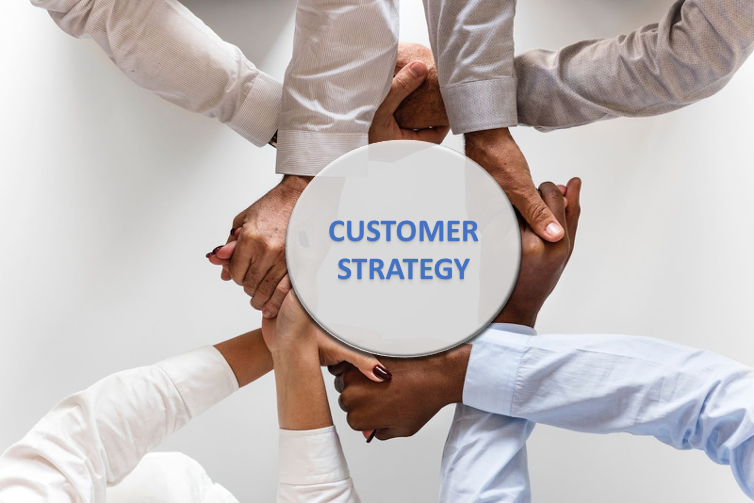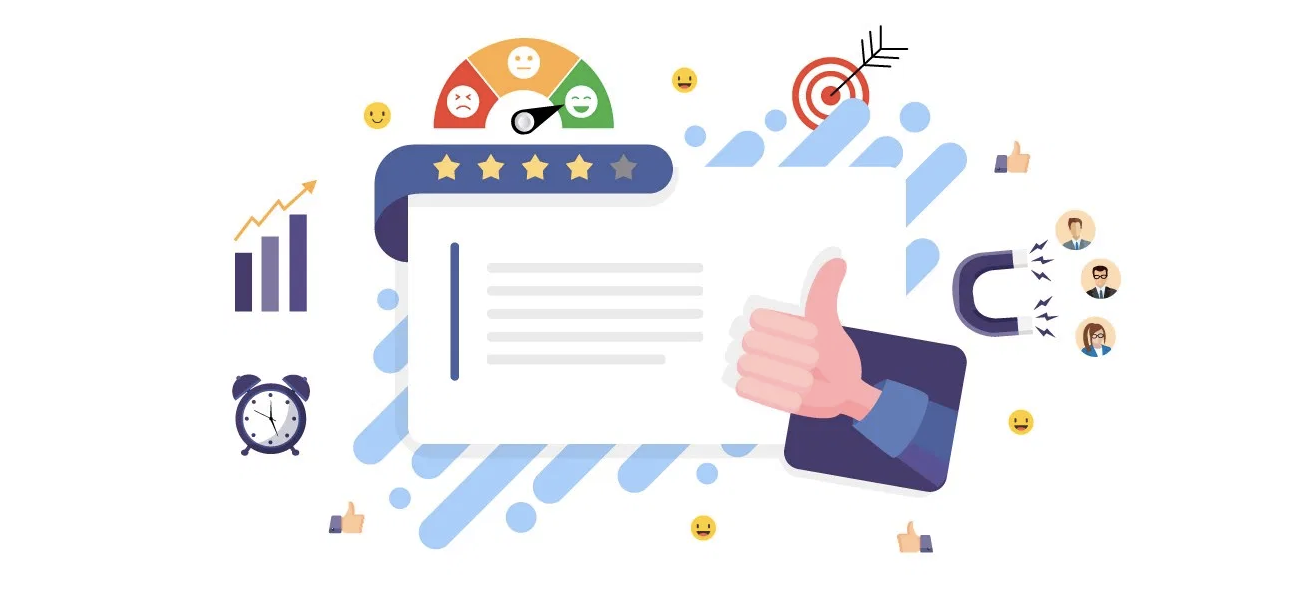A buyer persona is a semi-fictional representation of your ideal customer. Moreover, every customer is different, and buyer persona assists to understand your customers effectively.
“The only way you can anticipate your future customer’s needs is by understanding who they are”
Further, it helps to obtain a detailed description of your ideal customer persona that includes— their goals, challenges they face, their needs, and much more. All this information helps to strategize inbound marketing and guide your entire campaign.

Customer or Marketing Personas (or profiles) is the other word for Buyer personas. The primary aim for both is the same regardless of the term, which is to provide effective solutions to customers. Furthermore, Buyer personas help businesses better understand and empathize with their customers, allowing them to more successfully acquire and serve them.
To learn buyer persona thoroughly, read this comprehensive guide till the end. We’ll cover:
- Significance of Buyer Persona
- How Can You Use a Buyer Persona?
- Building Buyer Personas
- Creating Customer Personas
- Essential Contents that you Need to Focus
- Five Rings of Insight
- Plotting Customer Persona
- Buyer Persona Visualization
- Negative Buyer Personas
- Determining your Buyer Persona
- Benefits of Buyer Personas
Significance of Buyer Persona
Buyer personas help you to understand your customers, challenges, and pain points, and much more. It further helps to tailor your marketing, content, product development, and services in accordance with your potential prospects. For instance, one needs to understand all aspects of customers before offering what they need exactly.
Moreover, there’s no hit and trial method involved here. You need to undergo investigation, market research, and analytical data to form a strategic plan to target your potential customers.
All those factors will help to build the right marketing plan, narrative, and solid framework. And, it would further navigate your buyer persona towards success.
How Can You Use a Buyer Persona?
Buyer personas can be used in the formulation of product roadmaps. Moreover, it assists them in identifying and prioritizing adjustments to your offering based on the most pressing needs of your customers.
Furthermore, buyer personas were used by marketers to increase awareness and engagement for their websites, campaigns, and events. Marketers may be more laser-focused and efficient if they know who they're targeting. Moreover, it also allows you to humanize your business and better communicate with your ideal customer.
Nevertheless, when it comes to sales, buyer personas may assist in structure interactions to develop better trust and boost efficiency in lead nurturing. You might start from scratch or use a customer persona template. Consider customer demographics, behavior patterns, motivations, and, of course, goals in each case.
In addition, Buyer personas can be used in marketing to create effective tactics. They assist in focusing keyword research efforts and serve as a guide for campaign creation. They can also assist in determining and prioritizing promotional initiatives.
Ultimately, Buyer personas can also aid your sales team in forming new customer interactions.
Check out the following points on how you can use Buyer Persona for your company. Here are a few ways:
1. Forms and conversational tools:
You should ask your customers to identify themselves. Then you need to provide them descriptions. For instance, one of our personas— Mr. X is the owner of a company and is eager to expand it. This will assist you in segmenting your contacts from the start.
2. Using Smart and Accurate Content:
You can communicate directly to your customers or prospects about their journey by using the language that they could easily relate to.
Consider the same example with Mr. X: if we know who you are, we can give relatable headlines with impulse creativity. We assist business owners like you in turning your website into a money source, a revenue machine, a revenue ninja, and more.
You may quickly create the correct content source and distribute it through the most efficient channels this way.
3. Source of Information:
It is important to learn and understand the source of information of your customers. Learn from where your customers are obtaining their content. Are they reading everything on medium, social media, Twitter, or more?
This information further will help you to target your prospects on the right channels. To stay in touch with them, you could use techniques like social media retargeting.
For example, if they utilize LinkedIn but not Instagram, you'll want to concentrate your efforts there. In this scenario, let's concentrate on LinkedIn.
4. Email Newsletters:
Personalization is beyond companies and names. It is important to send relevant content to your customers based on their needs, interests, and benefits.
You can send Mr. X resources that could be relevant to them based on these factors. However, if you offer them the same and repeated information, then the click rate suffers, and ultimately you are losing value. Although, if you put your customer persona to work, then you can use personalization and segmentation procedures to target your audience in the right way.
Building Buyer Personas
Buyer personas can be constructed through a combination of essential elements. It includes research, surveys, and interviews with customers, prospects, and people who aren't in your contacts database but potentially fit your target demographic.
Creating Customer Personas
The most successful way to construct buyer personas is to interview consumers. Especially those customers who have previously taken decisions similar to those prospects who you want to attract and influence.
Moreover, effective customer persona interviews allow your consumers to share their journey or story as they proceed through their buying decision, including what worked and what didn't.
Interestingly, you'll find that 90% of the time, the consumer will talk, and if you guide them with the appropriate type of inquiry, you'll understand the phrases they use. In addition, you will understand their psychology when it comes to buying goods or services.
Nevertheless, you should also interview those that are not your existing customers. Moreover, interacting, engaging, and interviewing them would work wonders for your business effectively in the future.
Essential Content that you Need to Focus
Check the following table that will help you to obtain background information on your ideal customer:
Five Rings of Insight
“Buyer Persona often begins with a Buyer Persona Profile that describes the buyer, but for messaging we need to understand how buyers approach the decision we want to influence. We call this part the 5 Rings of Buying Insights, which generally depicts about 20 different key thoughts taken from direct interviews with your buyers.” ~ Adele Revella, CEO of the Buyer Persona
Building buyer personas consumes time, energy, and capital. Therefore, Adele Revella conceived the ‘5 Rings of Buying Insights’ concept to guide brands and marketers.
Following is the list of 5 Rings of Insights. Have a look:
- Priority Initiatives: The most persuasive reason for buyers to choose a solution similar to the one offered by your company. Their personal and professional situations. For example, you may need to compete for a job promotion.
- Success Factors: The operational or personal outcomes that your buyer persona anticipates as a result of purchasing your solution. For instance, impressing peers.
- Perceived Barriers: What are the barriers to purchasers considering your solution? For example, if you have had a bad encounter with the company in the past.
- The Buyer’s Journey: What they did to come to their decision. The buyer's journey information will be used to align your sales and marketing activities in order to target the most influential buyers at each stage of the decision-making process.
- Decision Criteria: The features of your product, service, or solution that purchasers consider when weighing alternative options.
Plotting Customer Persona
Now that you've created your personas, you need to create a buying route that will convert them into customers. Make a diagram of your buying process steps, including which personas are involved in each step and the critical insight rings for each.
As a result, you'll have personalities that you can relate to messaging platforms, marketing strategies, and sales approaches.
The first step in building your customer journey plot is to analyze and plan out how each persona participates at each level.
Throughout the decision-making process, analyze each buyer persona's actions and needs for the best results. This will assist you in influencing their decision-making.
The following is a section of any buyer's journey with long considerations purchasing cycle:
- Early-stage: The product is not yet available on the market. These shoppers are looking for material that is both informative and entertaining. It's your role to deliver that material while also increasing awareness and trust.
- Mid-stage: Your customers are familiar with your brand and are conducting more in-depth research on your product. Present more targeted content to keep buyers interested.
- Late-stage: Buyers are on the verge of making a purchase. Differentiate yourself from the competition by creating material that directly relates to your business and the benefits you provide.
Buyer Persona Visualization
To help people relate to their personas, the Content Marketing Institute (CMI) recommends including photographs and giving them names.
Furthermore, visualizing these personas as you research and work will provide you a clear idea of your customers or prospects. Also, that they are different from one another, and that changes to the journey and information you offer to them might affect each persona.
Eventually, remember to write down your persona and distribute it to everyone on your team for effective results.
Negative Buyer Personas
Why should you market to individuals who will never be lucrative customers? However, you can increase your profit per client by segmenting out the people who don't make you money, or the consumers you don't want.
Therefore, you need to consider who you don't want as clients but who you get a lot of leads from. So, create a profile for that individual and make sure to avoid targeting them. Stay away from the platforms they frequent. Note that not all business is profitable.
Determining your Buyer Persona
Advancements in technology will highly impact the buyer persona as well. And, it will further impact your business. Let’s say 15 years from now, smartphones and technology will evolve and so will the customer persona.
The majority of you must be wondering the exact number of buyer personas that you would need? Although there is no exact answer to this, it may differ in certain aspects and also from business to business.
Nevertheless, you might have 3-5 if you're a niche brand in a specialized market. It might be 20 or more if you're a big brand with a lot of product lines. To begin, each of your personas should have distinct characteristics.
When a consumer persona is too broad, you're wasting your energy and time. The best option should be to get rid of it. All you need is to focus on the five buyer personas that account for 90% of your business.
However, it is not worth creating a persona if you are unable to establish precise purchase goals as well as purchasing behaviors and patterns. Therefore, maintain the same mindset with your existing identities. If your list is getting out of hand, make your personality as objective as possible.
Moreover, if you're launching a product to a different market segment than the one you're presently targeting. Then you'll need to consider the distinct characteristics that product purchasers may possess, as well as how they differ from your current personalities. Once you start receiving data from customers, you can decide whether a new persona is necessary.
Benefits of Buyer Personas
Check the table below to learn the benefits associated with buyer personas:
Frequently Asked Questions (FAQs) on Buyer Personas
We have discussed some important queries based on buyer personas. Let’s have a look:
What are our options for finding persons to interview?
Buyers who have recently purchased your solution, as well as those who have not purchased anything at all or who have purchased from competitors, are the greatest buyers to interview for buyer personas.
Furthermore, these customers can be quite detailed about how they evaluated your solution and the other’s access to them because they have recently gone through the buying process.
In addition, they will provide you with a wealth of information about their sentiments toward your solution and competitors, both favorable and bad. They can also go through each phase of the purchasing process and the resources they used to reach a decision.
Is your buyer interview training useful for both B2B and B2C marketers?
Buyers of reasonably high-consideration products can and will explain how and why they recently reached a purchase. However, non-professional researchers can learn how to ask probing questions that elicit responses from purchasers.
On the other hand, buyers of low-consideration products are unable to explain their decisions with any certainty. As a result, low consideration solution marketers get buyer insights from experienced researchers. Consideration levels are measured on two dimensions:
- Your buyers' time and effort in weighing options and picking a decision.
- Your customers' perceptions of the risk of making the wrong option (financial, operational, and/or personal consequences).
What are the demographics Questions for Buyer Persona?
The answers to demographic questions will give you a broad, overarching view of your target market. Asking all of these questions of the customer directly may not be appropriate (or time-effective). However, you can obtain this information from public sources or ask internal people for their opinion.
- What is the age of your customer?
- What gender, if any, do they identify with?
- Where do they live?
- What’s their marital status?
- What is their degree of education?
- Do they have any kids? If so, how many and how old are they?
- How much money do they generate as an individual or as a family?
What could be the Professional Information?
Whether you're a B2B or B2C company, obtaining the overall data of the customer's work life is crucial. Because it will further influence how they see the world, spend their time, and take important decisions. Even if the buyer does not have formal work, they will almost always have a primary function (such as being a stay-at-home parent, student, or volunteer) that is officially their employment.
- What is the location/place of your customer's workplace?
- What is their major role and/or job title?
- What are their goals or plans for the future?
- What’s their employment and current status?
- What would they say about a regular day for them?
- What unique abilities do they possess?
- Who is their employer, and what are their responsibilities?
- What is the size of the company for which they currently work?
- What criteria are used to evaluate their success?
- What tools do they employ to carry out their duties?
- Do they have any authority over others?
What questions Should we Ask in the Buyer Motivation Section?
We'll learn about this person's motivations in this segment. These buyer persona interrogations will help you to evaluate and analyze what matters to your customers and what they are concerned about.
We'll also try to figure out what goals they've set for themselves and/or what their organization expects of them. Finally, we'd like to know what stands in their way.
This is the data that will allow us to better understand our customers’ pain points and the factors that influence their purchasing decisions.
Goals and Obstacles:
Here is the list of the following questions that you can ask in the goals and obstacles segment. Check out:
- What are the buyer's personal and/or professional objectives?
- What are their goals and priorities?
- What issues does this bring up for them?
- What obstacles do they struggle with in achieving their objectives?
- What products or services could you offer to help with such issues?
- What would make them want to find a solution?
Fears and Values Segment:
Here is the list of the following questions that you can ask in the fears and values segment. Check out:
- What do they value in their personal and professional lives?
- What could be their major obstacles to making the purchase?
- What variables do they take into account when buying a product like yours?
- What factors influence their decision-making?
- What would happen if they choose the wrong path?
- Which (if any) competitors might they consider?
- What if they took no action at all?
What is the Information Related to Negative Buyer Personas?
Knowing who you should market to is just as important as recognizing those who aren't a suitable fit for your products or services. Fortunately, this can save you time and expose your company to individuals who you can't please.
Consider a moment when a customer relationship didn't work out and then expand this list of questions (if possible).
- Which customers are the most difficult or costly to support?
- Is your product unsuitable for certain firms or individuals, or was it simply not designed for them?
- Are there any clients that can't afford what you have to offer?
You can make use of the above-mentioned information for your buyer persona and evaluate them. Also, make sure to gather as much information as possible about your target demographic.
Are there any pre-made buyer persona templates I could use?
Although there are other buyer persona templates to choose from. There are certain available websites that offer you free or paid templates depending on your requirement. Moreover, you need to simply do your homework and fill in the blanks, and you're ready to start using personas in your marketing strategy.
What to do after we collect or gather all the important data for buyer personas?
After you've recorded your persona, make sure everyone on your team is aware of who it is. It would further help the whole team to be on the same page with the material you gathered. Everything your company does should be based on these gathered data representations.
Finally, after your personas have been established, it's critical to maintain them up to date in order to keep them relevant and correct. Furthermore, we recommend updating them at least once a year.
You'll be able to attract the most valuable visitors, leads, and customers to your organization if you can conduct productive interviews and put what you discover into a company-wide document.
Example or Template of Buyer Persona
As we learned all about buyer persona. It is important to know about the structure that includes all factors in it. However, it is completely your decision on how you want to create your buyer persona template and how you want to structure and format it.
If we talk about its structure, then it is a one-page document with sections and a photo of the individual. Furthermore, important words should be bolded, bullets should be used to call attention to significant traits. In addition, make sure that there should be enough white space. This buyer persona template should serve as a good starting point.
Look at the following template example. You will get a detailed and clear idea how the buyer persona template looks like. Let’s check:
Moreover, searching for templates on Google might not work as a perfect idea. Because your research will generate a lot of data, writing a buyer persona is more difficult than it appears.
Nevertheless, you'll need to go over the data, figure out which insights are the most useful, and then turn it into a clear, simple paper that captures the essence of the individual and that your team will actually use.
Eventually, the greatest approach to learn and understand how to generate a buyer persona for your customers is by implementing it for your business. You will gradually become an expert in this area.
How Deskera Can Assist You?
When you are running your own business, there are tons of duties and responsibilities that you have to fulfill. Your time is essential and has to be saved at all costs to develop your business further. This can be ensured by implementing Buyer Persona with the Deskera system.
Doing so will help you to save the time taken in transferring customer data between the different systems. It will also assist you with real-time updates about your business like cash flow status, customer satisfaction, inventory management, sales, purchases, purchase orders, customer tickets, customer satisfaction, managing leads, revenues, profit, and loss statements, and balance sheets.
It would also help in integrating customer persona across different platforms onto one system so that you have a consolidated list for email campaigns, leads management, and sales pipeline to mention a few.
It will also help you to sync between your orders, payments, taxes, refunds, product variants, sending out invoices and reminders, facilitating invoice management, and even undertaking follow-ups and advertisement campaigns.
Such a consolidated platform will help you to improve sales persona through building buyer persona and also facilitates faster and well-informed decision-making. It will help you in strengthening your opportunities and being braced for the threats.
Deskera books and Deskera CRM will also be able to ensure the highest customer satisfaction and thereby an increase in net revenues and net profits.
Final Takeaways
As we have reached the final section of this comprehensive guide. Let’s note the crucial points of this guide. It includes:
- A buyer persona is a semi-fictional representation of your ideal customer.
- It helps to obtain a detailed description of your ideal customer persona that includes— their goals, challenges they face, their needs, and much more.
- You need to undergo investigation, market research, and analytical data to form a strategic plan to target your potential customers.
- Buyer personas can be used in the formulation of product roadmaps.
- When it comes to sales, buyer personas may assist in structure interactions to develop better trust and boost efficiency in lead nurturing.
- Adele Revella conceived the ‘5 Rings of Buying Insights’ concept to guide brands and marketers.
- It is not worth creating a persona if you are unable to establish precise purchase goals as well as purchasing behaviors and patterns.
- Buyer personas help you gain a better knowledge of your existing and potential clients.
- Customer personas are fantastic sales persona tools. They offer them a clear idea of who they're going after. They can communicate in a manner where the audience could easily connect to them easily in their own language and also based on their interest.
- A negative persona is quite the opposite of a buyer persona. It indicates that you are not being targeted. It's critical to define this because it aids in increasing efficiency and sales productivity.
Related Articles











